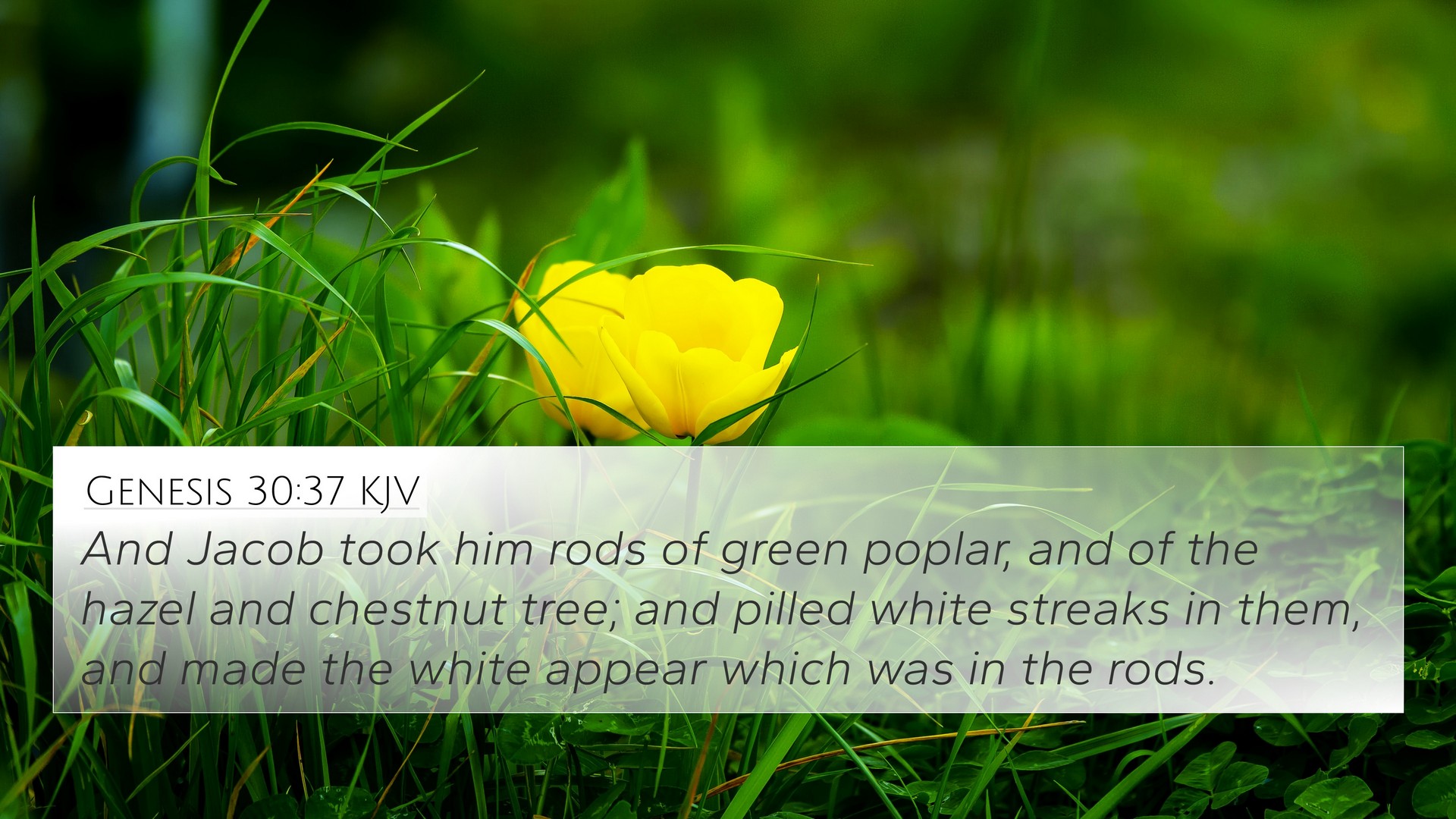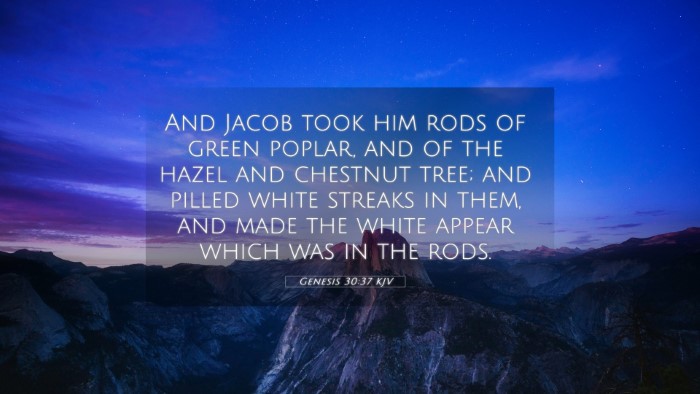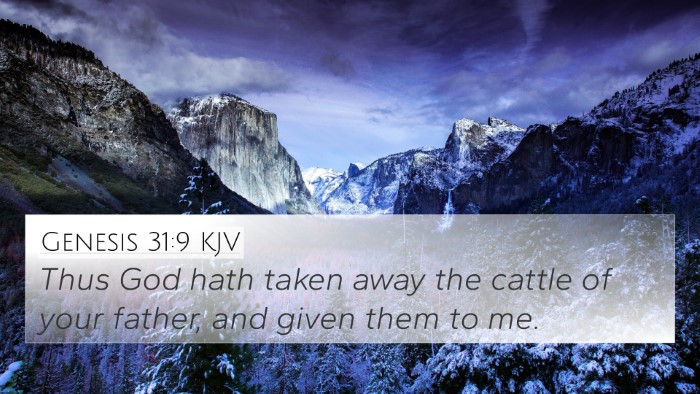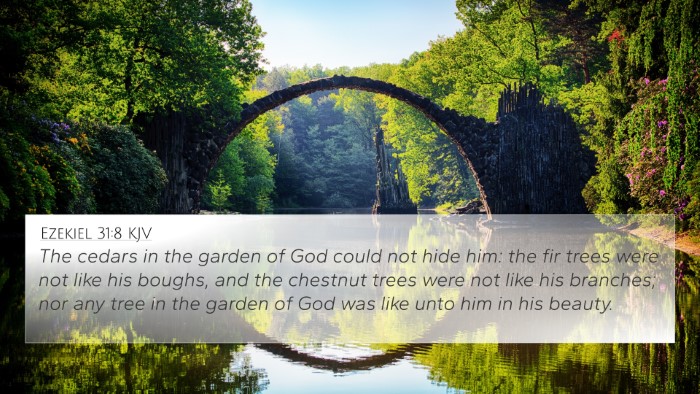Understanding Genesis 30:37
Genesis 30:37 provides an intriguing moment in the narrative of Jacob and Laban, encompassing themes of deception, divine intervention, and the complexities of human relationships. This verse states:
"And Jacob took him rods of green poplar, and of the hazel, and chesnut; and peeled white strakes in them, and made the white appear which was in the rods." (Genesis 30:37, KJV)
This passage is key to understanding Jacob's strategy to increase his flock through an ancient practice involving selective breeding and possibly superstitious rituals. The significance of the rods, their appearance, and Jacob's actions culminate in a broader theological theme of God's providential guidance amidst human schemes.
Commentary Insights
Matthew Henry's Commentary
Matthew Henry emphasizes that the rods Jacob uses symbolize a combination of human ingenuity and faith. Jacob's actions can be seen not only as clever but also reflective of a belief that the visible can influence the unseen, invoking God's favor in the process of breeding. Jacob’s method might also suggest a reliance on earthly means while expecting divine results.
Albert Barnes' Notes
Albert Barnes focuses on the specifics of the breeding process, remarking on Jacob’s use of the rods to create a visual effect during mating. He notes that this practice could be rooted in local beliefs regarding the influencing properties of external appearances on animal offspring. It reflects the tension between faith and superstition. Barnes calls for readers to recognize the underlying sovereignty of God in this scenario, illustrating that while Jacob takes action, it is ultimately God who determines the outcome.
Adam Clarke's Commentary
Adam Clarke comments on the symbolic nature of the rods and their significance in Jacob’s dealings with Laban. He notes that Laban was a craftsman of deception, and Jacob’s actions mirror this manipulation. Clarke highlights that God's blessings manifest through human effort and cunning, yet ultimately, God’s will prevails over human intentions. Clarke argues that the verse showcases a blend of divine providence and human agency in the unfolding of biblical events.
Bible Verse Cross-References
Understanding Genesis 30:37 can be enriched by considering its connections with other passages in Scripture. Below are key cross-references that illustrate similar themes and concepts:
- Genesis 31:10-12: Jacob's dream and God's direction concerning his livestock.
- Exodus 23:19: The biblical principle of the firstfruits, connecting God's provision with careful stewardship.
- Proverbs 19:21: This verse highlights pursuit and the sovereignty of God's plan beyond human intentions.
- 1 Corinthians 3:6-7: The interplay of human effort and divine growth, paralleling Jacob's actions and God's ultimate will.
- Isaiah 5:21: A reminder of the folly in reliance solely on human understanding, which can relate to Jacob's cunning.
- Psalm 127:1: The importance of divine involvement in our endeavors, accentuated in Jacob's experience.
- Matthew 6:33: Suggesting that prioritizing God’s kingdom is paramount in the context of human striving.
- Galatians 6:7-8: It reflects the principle of reaping what one sows, resonating with Jacob’s manipulation of breeding.
- James 4:13-15: A caution against presuming upon the future plans, akin to Jacob's schemes.
- Romans 8:28: Reinforces the overarching theme of God working all things together for good, applicable to Jacob’s journey.
Thematic Connections
The narratives surrounding Genesis 30:37 and its cross-referencing verses serve to illustrate broader biblical themes such as:
- Divine Providence: God’s active role in the affairs of humanity.
- Human Ingenuity: The complex relationship between human efforts and God’s sovereignty.
- Morality and Ethics: The consequences of deceit and manipulation.
- Faith and Action: The importance of balancing belief with practical steps.
Conclusion
Genesis 30:37 encapsulates a rich narrative that involves human agency amid divine orchestration. The commentaries highlight Jacob’s actions in light of his complicated relationship with Laban, underscoring the duality of his cleverness and reliance on God. A comprehensive Bible study approach using tools for Bible cross-referencing reveals deeper insights into the text and enriches understanding of scripture as interconnected. Through thematic Bible verse connections, readers can grasp the significance of this verse and its relevance within the greater biblical canon.
Further Study
For those looking to explore further, the use of a Bible concordance or a Bible cross-reference guide can provide additional insights and verses that relate to Genesis 30:37. Engaging in cross-reference Bible study enables a richer understanding of the connections between various biblical texts, fostering a deeper appreciation for the intricate tapestry of Scripture.




